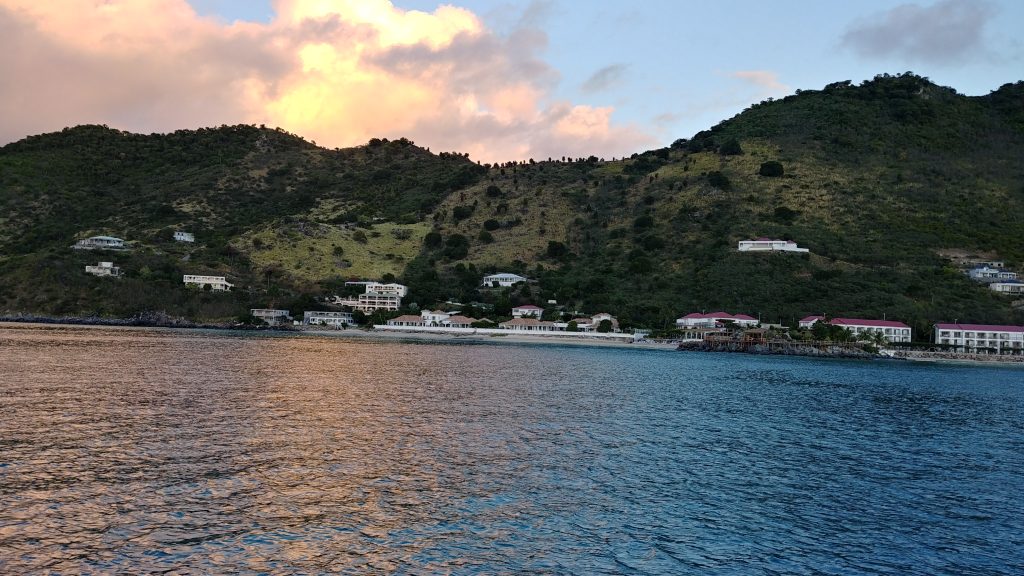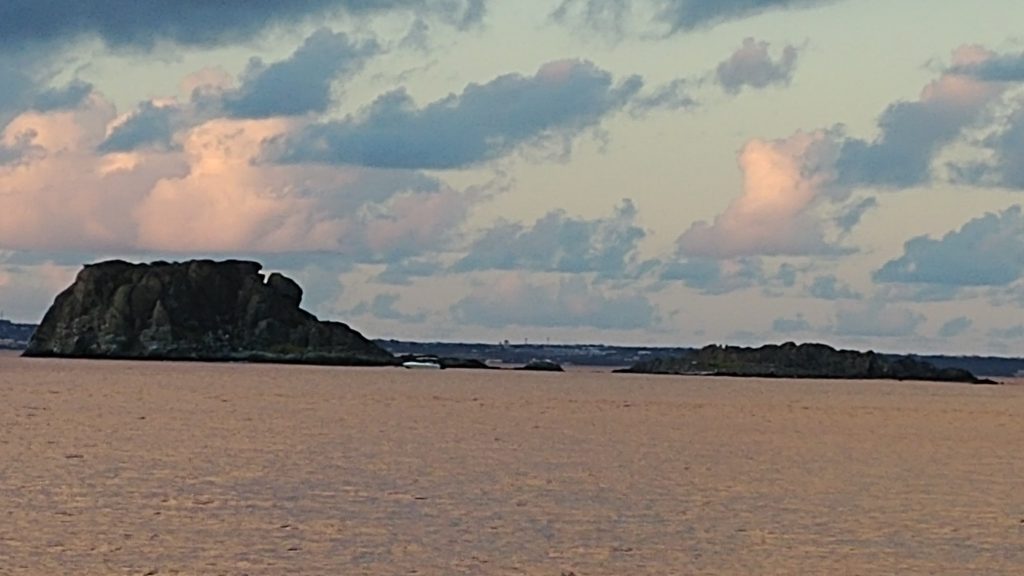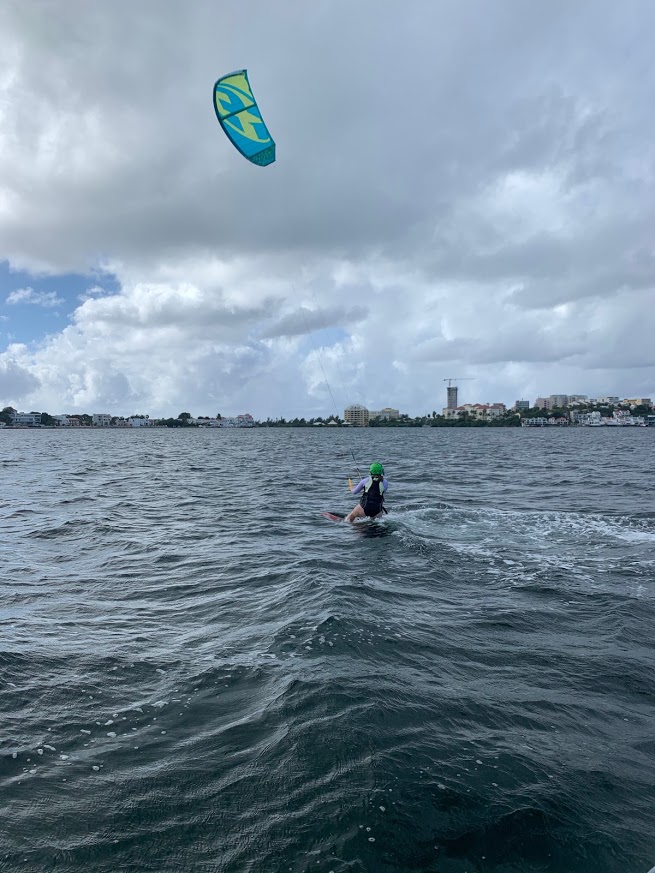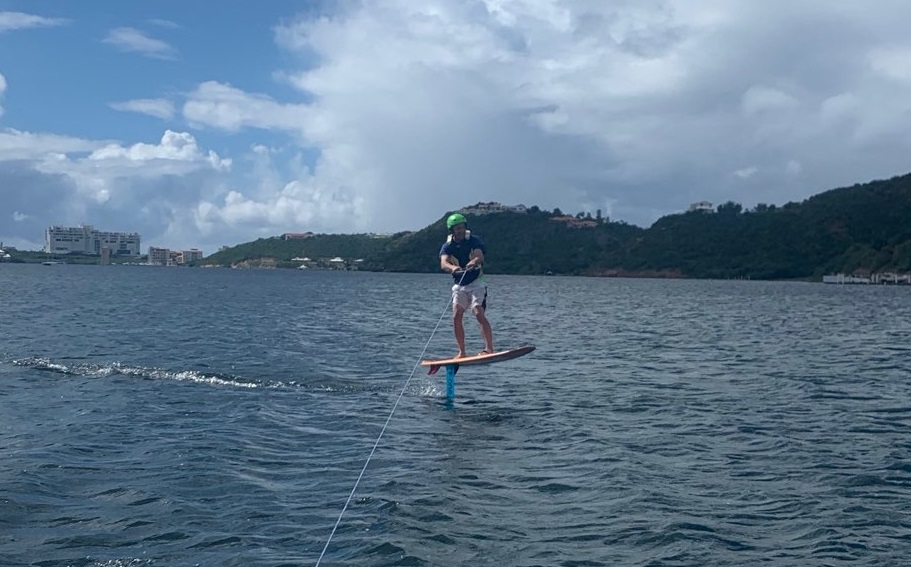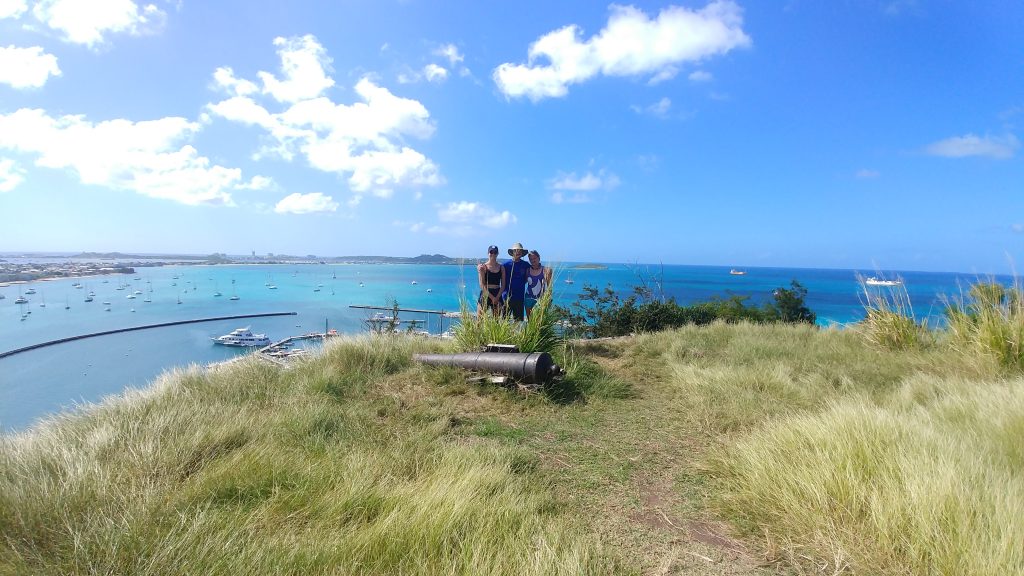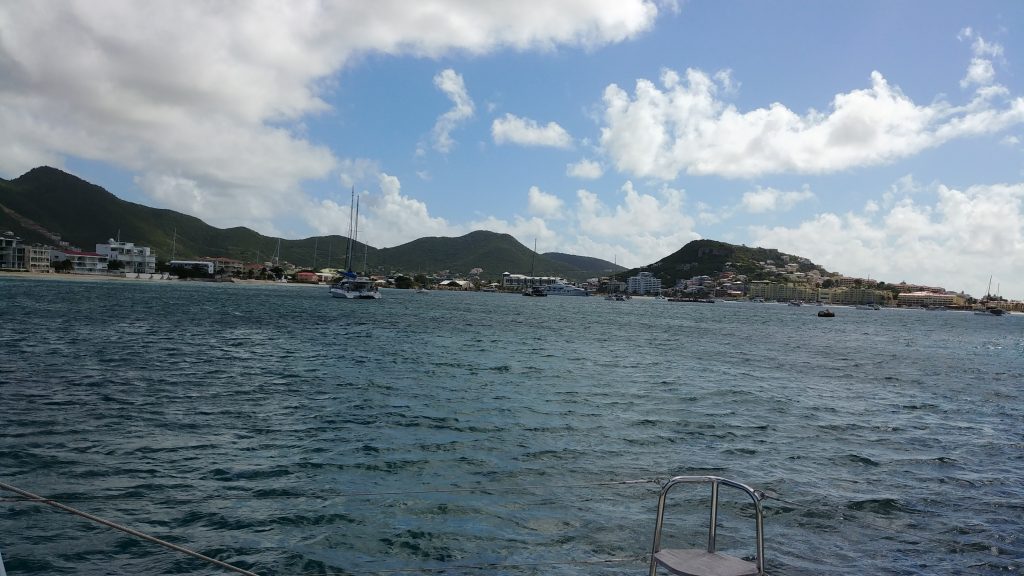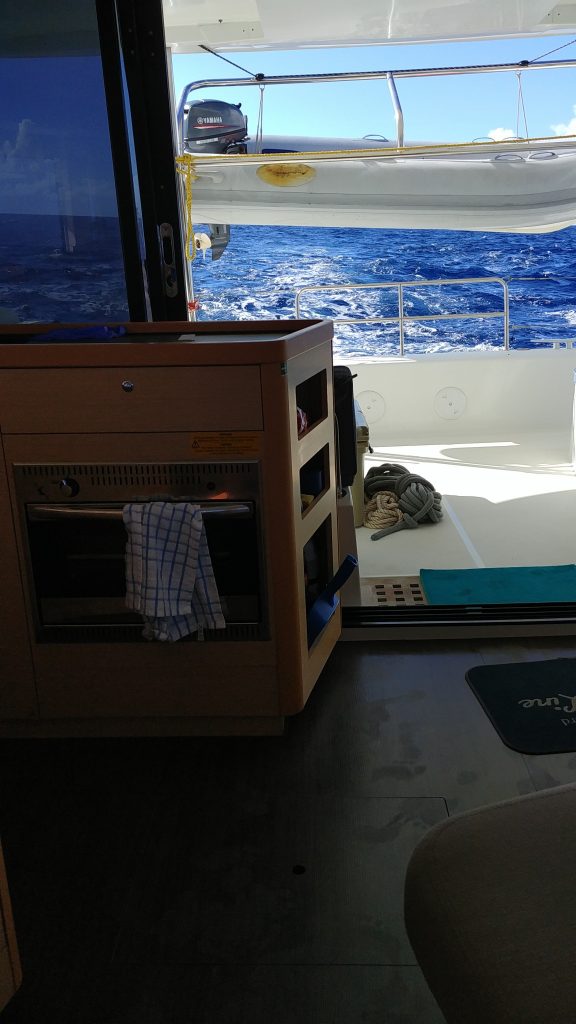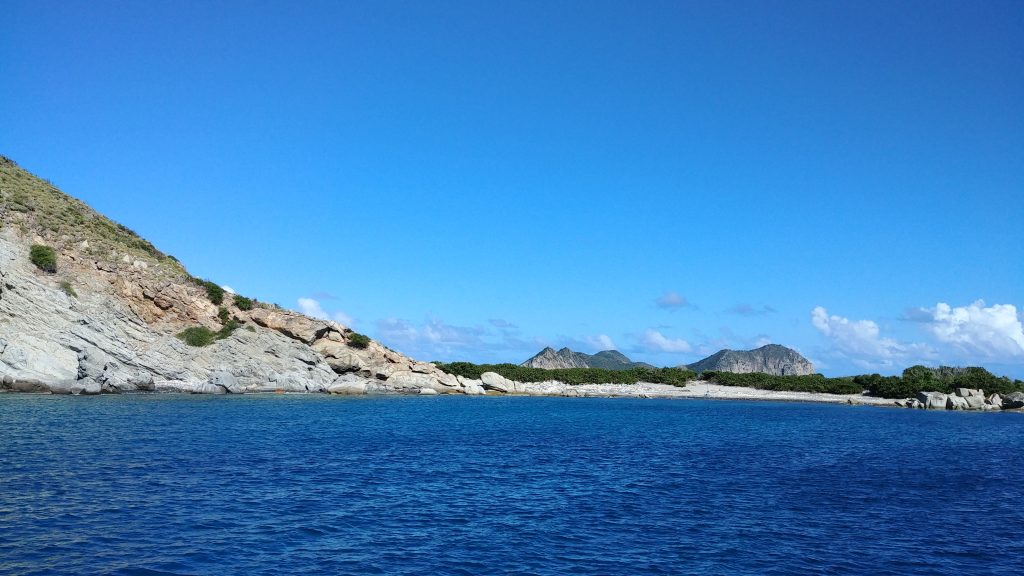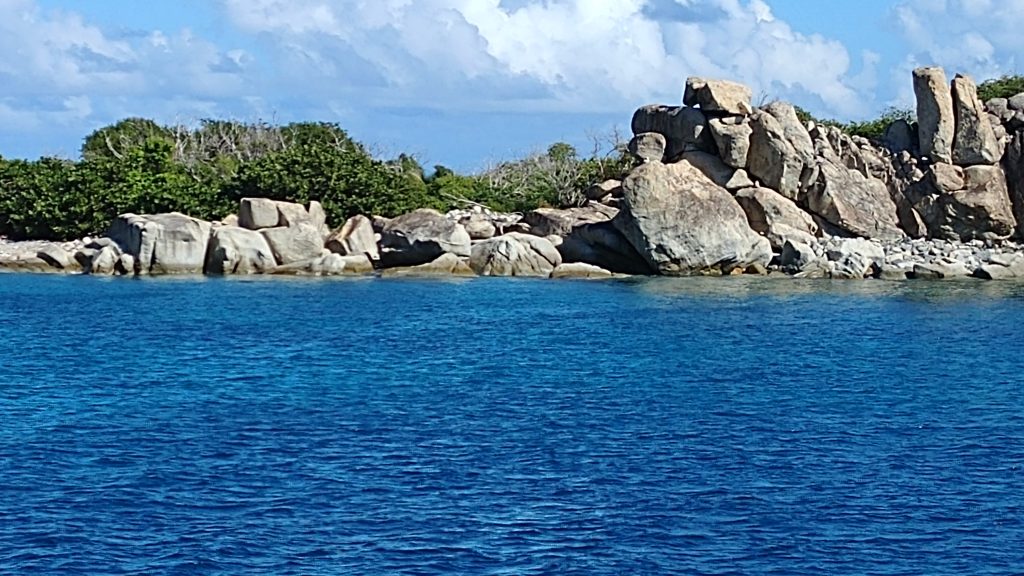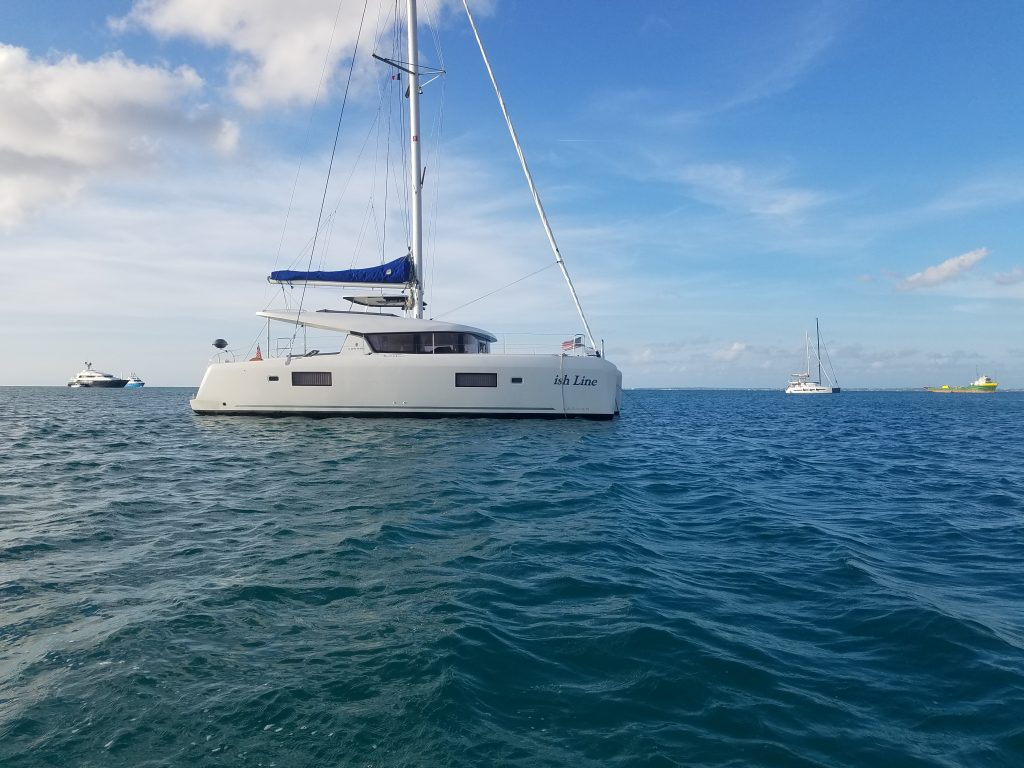
One of the tasks on our new boat was to remove the old decals. The old name “Finish Line” were on both bow pontoons, the hailing port was on the stern, and the charter logo decals were on both sides of the bimini.
After a little bit of research, the recommended removal mechanism was to purchase an “eraser wheel” and use that with a power drill. The eraser wheel is literally eraser material on a wheel that you put in the chuck of your power drill. It does a fine job of removing decals without damaging the gelcoat, but does take some time. Also, power is a little hard to come by, so I used a rechargeable drill. This worked fine when standing on a firm footing, but to remove the bow decals, I needed to stand in the dinghy and press the rotating drill against the hull. Due to the movement of the dinghy and the waves, this was not a trivial exercise. In addition, the eraser would come loose from the chuck and drop. The couple of times this happened, it landed in the dinghy, but I became paranoid that it would fall in the 25 feet of water and I’d have to go diving for it. Even worse, if the drill fell in the water, the saltwater would completely destroy the drill.
I removed the decals over several days (weeks) and Sydney thought it was funny that the name “Finish Line” had turned into “ish Line”.

